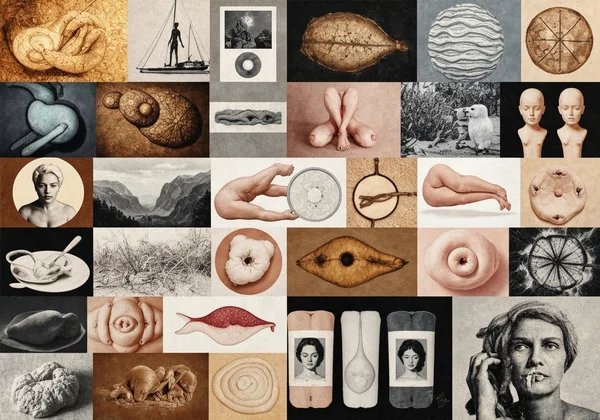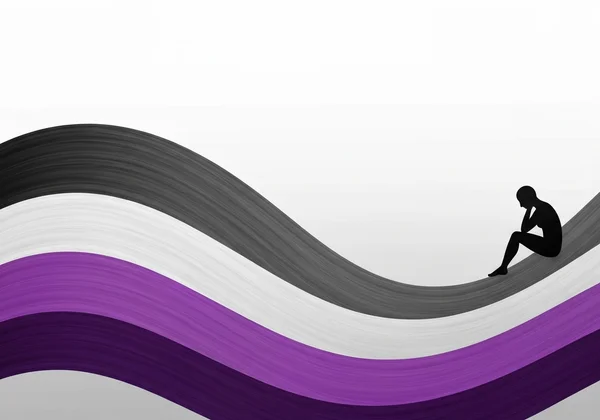Kinsey Scale Stories: 5 Real Journeys of Sexual Self-Discovery
Ever taken a Kinsey Scale test and wondered, "What now?" That score isn't a final label—it's the start of a conversation with yourself. You're not alone in this journey. Hearing real Kinsey Scale stories from others can be an incredibly powerful and validating experience, turning a simple number into a meaningful insight.
This article shares five anonymous journeys from individuals who used the Kinsey Scale as a tool for reflection. Their paths are unique, filled with moments of clarity, surprise, and self-acceptance. As you read, remember that this is a space of empathy and support. If these stories resonate, you're invited to begin your own reflection by taking our free Kinsey Scale test.

What Your Kinsey Scale Score Really Means
The number you receive is not a label; it's a snapshot, a single point in your ongoing journey of self-discovery. For some, it confirms long-held feelings, while for others, it opens up new ways of thinking about their identity. Let's explore how different individuals have interpreted their scores.
Alex’s Journey: Making Sense of a Kinsey 2 Score
Alex, a 22-year-old recent graduate, had always dated people of the opposite gender but felt a persistent curiosity about same-sex relationships. After some hesitation, Alex took the test and scored a 2—"Predominantly heterosexual, but more than incidentally homosexual."
Initially, Alex felt confused. "I thought you were either straight or gay, with bisexuality somewhere in the middle," they shared. "A '2' felt like I was in a gray area." Instead of dismissing the feeling, Alex used it as a prompt for introspection. They began reading personal essays and watching videos by people who identified as bisexual or queer. This exploration helped them realize that sexuality isn't a rigid box. The score of 2 gave Alex the language to understand their feelings: that it was okay to be primarily attracted to one gender while still acknowledging genuine attraction to another. It was the beginning of their identity exploration, a quiet but powerful step toward self-acceptance.
Sarah’s Fluidity: A Kinsey 4 and Evolving Sexuality
Sarah, 28, received a score of 4—"Predominantly homosexual, but more than incidentally heterosexual." This result aligned with her current life, as she was in a loving relationship with a woman. However, her dating history included significant relationships with men. For years, she felt like an imposter in queer spaces because of her past.
"The Kinsey Scale helped me see my sexuality as a journey, not a destination," Sarah explained. "My Kinsey 4 didn't erase my past; it validated my present and acknowledged the complexity of my attractions." Sarah's story is a beautiful example of sexual orientation fluidity. She learned that her capacity for attraction wasn't limited and that her past and present could coexist without conflict. Her journey highlights that the scale can validate the evolving nature of desire over a lifetime.
When Your Kinsey Scale Result is a Surprise
Sometimes, the result from a Kinsey Scale test can be genuinely surprising. This can be unsettling at first, but it can also be a powerful catalyst for growth and a deeper, more honest connection with oneself. An unexpected score is an invitation to ask new questions and explore feelings you may have subconsciously set aside.

Michael’s Revelation: An Unexpected Kinsey 6
Michael, a 35-year-old man, grew up in a conservative environment where anything other than heterosexuality was never discussed. He was married to a woman and had children, but he carried a quiet, unexplored sense of disconnect. On a whim, driven by an article he read online, he decided to take the test privately. His result was a 6—"Exclusively homosexual."
The score was a shock. It brought years of buried feelings to the surface. "The result was both terrifying and liberating," Michael recalled. "For the first time, something explained the part of me that always felt out of place." His result didn't instantly solve everything—it led to difficult conversations and significant life changes. However, Michael describes it as the moment he started living authentically. His journey shows how a simple tool can trigger a profound and necessary revelation about one's true self, no matter their age or circumstances.
Jamie’s Discovery: The Meaning of a Kinsey X Score
Jamie, 19, felt different from their peers when it came to conversations about crushes and attraction. While their friends talked animatedly about their desires, Jamie felt a distinct lack of sexual pull toward anyone, regardless of gender. When they took the Kinsey Scale quiz, they answered the questions honestly and received the score "X."
The "X" category signifies a lack of socio-sexual contacts or reactions. For Jamie, this was a pivotal moment. "Seeing 'X' was a relief," they said. "It wasn't that I was broken; there was a term for my experience." This led them to discover the concept of asexuality. The Kinsey X score explained a core part of their identity that they previously had no words for. Jamie's story underscores the importance of the "X" score in providing visibility and validation for those on the asexual spectrum, reminding us that the absence of sexual attraction is just as valid as its presence.

Shared Stories: Finding Community and Self-Acceptance
Sharing our journeys, even anonymously, builds a powerful sense of community. It breaks down the isolation that can accompany self-exploration and reminds us that we are all navigating our own unique paths. Each story adds another thread to the rich tapestry of human sexuality.
Chris’s Affirmation: The Stability of a Kinsey 3
Chris, a 25-year-old artist, has taken the Kinsey Scale test multiple times over the years. Each time, their score has been a consistent 3—"Equally heterosexual and homosexual." For Chris, this score has been a source of stability and affirmation.
"The world often pressures you to choose a side," Chris noted. "But my '3' feels like my center. It’s not indecision; it’s my identity." Rather than causing confusion, the consistency of the result provided Chris with a strong sense of self. It empowered them to embrace their bisexual identity fully and confidently. Chris’s experience demonstrates that the Kinsey Scale isn't just for moments of revelation; it can also be a tool for ongoing self-acceptance and a steady reminder of who you are. To see where you might fall on the spectrum, you can Take the Kinsey Scale test today.
Start Your Own Journey of Self-Discovery
Alex, Sarah, Michael, Jamie, and Chris represent just five of countless possible journeys. Their stories teach us that there is no "right" or "wrong" result. Whether your score confirms, surprises, or challenges you, it serves a single purpose: to be a tool for your personal growth.
Your path is your own. The insights you gain are yours to interpret and integrate into your life in a way that feels authentic to you. The most important step is the one you take toward understanding yourself more deeply. If you're ready to continue your exploration, our platform offers a confidential and insightful experience. Take the free Kinsey Scale test and see what you might learn.
Kinsey Scale Journeys: Frequently Asked Questions
What does a 3 on the Kinsey Scale mean?
A score of 3 on the Kinsey Scale indicates an equal attraction to both males and females. Individuals with this score are often described as bisexual. However, it's crucial to remember that the scale is a tool for self-reflection. How you choose to identify is entirely up to you; the score simply provides a framework for understanding your attractions.
Is the Kinsey Scale still relevant today?
Absolutely. While the original 1940s research doesn't capture the full, nuanced understanding of gender and sexuality we have today (like pansexuality and gender identity), the Kinsey Scale's core concept remains revolutionary. It introduced the idea of sexuality as a spectrum, shifting culture away from a rigid binary. It serves as an excellent, accessible starting point for personal reflection and helps initiate important conversations about one's own feelings and attractions. It paved the way for the more detailed models of sexuality we use today.
Can my Kinsey Scale score change over time?
Absolutely. Human sexuality can be fluid, and your feelings, attractions, and experiences can evolve throughout your life. It's not uncommon for someone to get a different score if they take the test years apart. Your score is a reflection of a specific moment in time, not a permanent label. Re-taking the test can be a fascinating part of your ongoing self-discovery.
What if I don't agree with my Kinsey Scale result?
That's completely okay. The Kinsey Scale test is not a diagnosis or an undeniable truth; it is a tool for self-reflection. Your result is meant to be a prompt for introspection, not a final label. If the score doesn't resonate with you, the most important thing is to trust your own feelings and identity. You are the ultimate authority on who you are. The exploration sparked by the result is often more valuable than the number itself.
Where can I take the official Kinsey Scale test online?
You can take a confidential and user-friendly version of the Kinsey Scale test right here. Our platform is designed to provide a safe space for your journey of self-discovery. When you're ready, you can take our free Kinsey Scale test and even receive an optional AI-powered analysis for deeper insights.